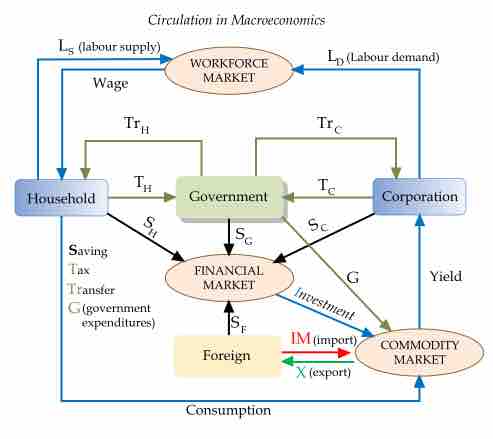Economics is comprised of many specializations; however, the two broad sub-groupings for economics are microeconomics and macroeconomics.
Macroeconomics
Macroeconomics is a branch of economics that focuses on the behavior and decision-making of an economy as a whole . In this manner it differs from the field of microeconomics, which evaluates the motivations of and relationships between individual economic agents.

Macroeconomics: Circular Flow of the Economy
Macroeconomics simplifies the complexities of the trading activities in an economy by distilling actions to primary participants and tracing the circular flow of activity between them.
Indicators
Macroeconomists study aggregated indicators such as GDP, unemployment rates, and price indices to understand how the whole economy functions and develop models that explain the relationship between such factors as national income, output, consumption, unemployment, inflation, savings, investment, government spending, and international trade. These variables taken as a whole comprise a grouping of variables that are referred to as economic indicators. These indicators, which are classified as leading, lagging and coincident relative to their predictive capability, in combination with one another provide economists with a directional attribution for the economy.
Macroeconomic Study
While macroeconomics is a broad field of study, there are two areas of research that are especially well publicized in the media: the evaluation of the business cycle and the growth rate of the economy. As a result, macroeconomics tends to be widely cited in discussions related to government intervention in economic expansion and contraction, as well as, with respect to the evaluation of economic policy.
Though macroeconomics encompasses a variety of concepts and variables, but there are three central topics for macroeconomic research on a national level: output, unemployment, and inflation. Outside of macroeconomic theory, these topics are also extremely important to all economic agents including workers, consumers, and producers.